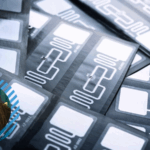I am an employee at an RFID-based company. Currently, UHF RFID is being used in most areas, such as jewelry stores, retail locations, libraries, etc. But UHF is an ionizing radiation, so is it safe for humans to be exposed to it? I saw, in one paper, that a person should be at least 10 meters from a UHF reader. If someone were less than that distance away, the report said—even if he were exposed for only one hour—there would be damage at the DNA level, resulting in eyesight problems, brain tumors, etc. Is that true? If so, then why are RFID suppliers unaware of this—or, if they are, why is it not emphasized? I have seen, at many installations (including our own), a reader being placed only a meter from personnel, who are thus continuously exposed. Does this cause any harm to people? Please specify the correct usage of UHF RFID readers.
—Bharath
———
Bharath,
The radiation emitted by a passive UHF reader is very low. One of the few papers to research the impact of exposure to passive UHF RFID radiation was written at the University of Texas. The paper, titled “Specific Absorption Rates in the Human Head and Shoulder for Passive UHF RFID Systems at 915 MHz,” said that in an ideal absorption environment, an RFID reader located 10 centimeters (3.9 inches) from a human head would present a specific absorption rate greater than 1.6W/kg for both the spatial-peak 1 g and 10 g cube of tissue—the maximum value allowed by the United States’ Federal Communications Commission (FCC).
“The basic result of all of our work is that really close proximity to UHF [ultrahigh-frequency] RFID readers has potential health issues, particularly when close to the eyes,” Professor Dan Engels, the study’s author, told RFID Journal at the time (see Can RFID Be Harmful to the Human Body?). “The eyes are perhaps the most vulnerable part of our bodies to RF radiation.”
To avoid any potential harm to humans, Engels recommended, UHF RFID interrogators should be set back at least 0.5 meter (1.6 feet) from anyone who might receive constant exposure. He suggested having a read zone cover the body below the neck, which is presumably where the tag would be placed. If the interrogator were within legal power output limits and were kept at least 1 meter (3.3 feet) from the human body, the incident radiation—even on the eyes—would be well below maximum allowable levels.
—Mark Roberti, Founder and Editor, RFID Journal








